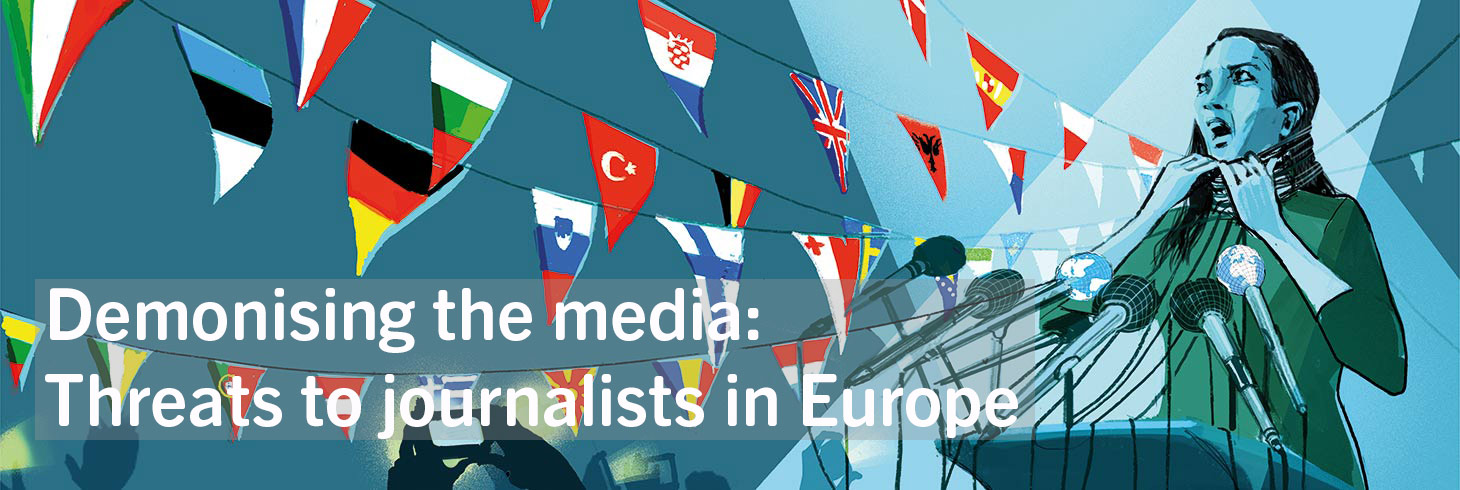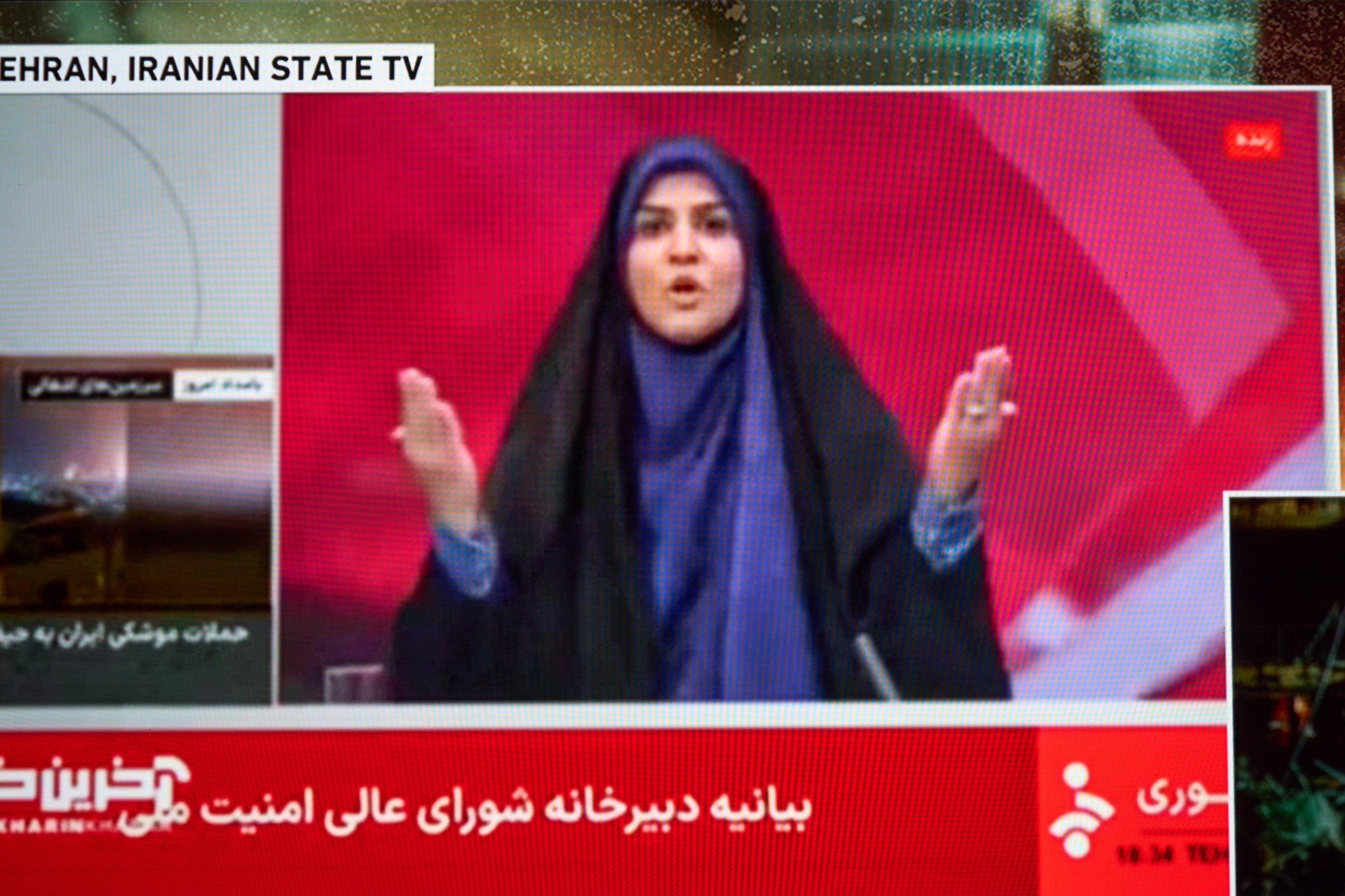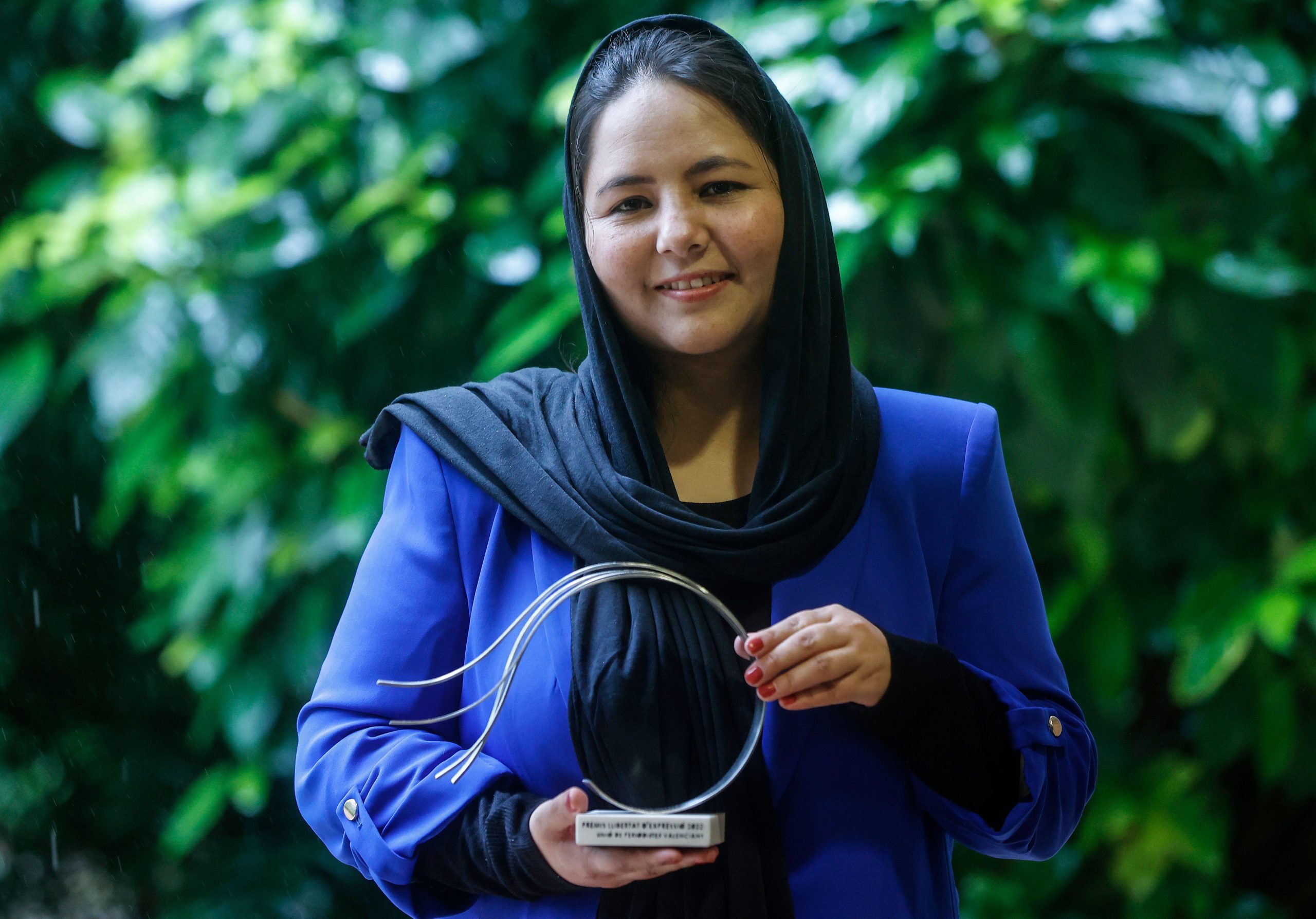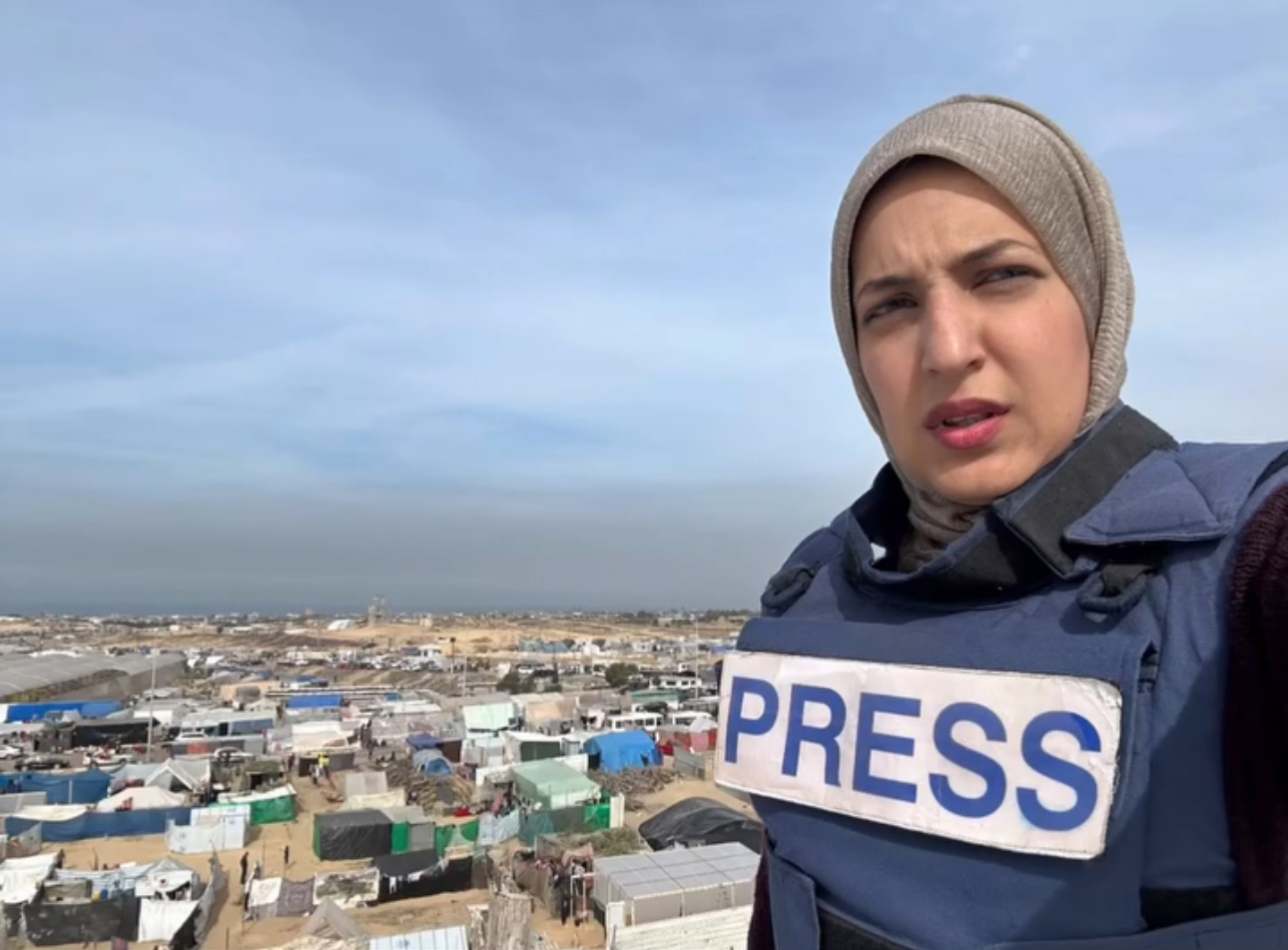[vc_row][vc_column][vc_single_image image=”103665″ img_size=”full”][vc_column_text]— New report surveys over 3,000 verified media freedom incidents in EU member states, candidates and potential candidates for entry.
— Journalists facing an array of threats: Burned in effigy. Insulted. Menaced. Spat at. Discredited by their nation’s leaders. Assaulted. Sued. Homes strafed with automatic weapons. Rape threats. Death threats. Assassinations.
— Key themes: National Security, Political Interference, Social Media/Online Harassment, Protests, Public Television
— Report covers May 2014 to 31 July 2018
Index on Censorship has released a new report detailing the state of media freedom in 35 European countries in the past four years. Threats include being burned in effigy, insulted, menaced, spat at, threatened with death and rape. There have been assassinations, lawsuits, and assaults.
The report Demonising the Media: Threats to Journalists in Europe, published today (November 9th) covers 3,000 incidents reported to and verified by the Mapping Media Freedom team, which includes a set of correspondents across the region.
“The huge number of reports outlines that threats to media freedom are occurring across the EU, not just in countries perceived to be on the fringes of the community. Demonising the Media details the key issues that we’ve identified: From national security legislation being used to silence investigative journalists to the undermining of the editorial independence of public broadcasters across the continent. All of this has taken place amid the toxic atmosphere journalists are confronting on a global scale,” said Index CEO Jodie Ginsberg.
KEY THREATS
The report flags 445 verified physical assaults across the region, with Italy as the EU member state with the most reports of physical assaults (83), followed by Spain (38), France (36) and Germany (25).
There were 437 verified incidents flagged as having included an arrest or detention as part of the narrative in the EU member states, candidate and potential candidate countries. Greece had 15 reports. It was followed by France (9), Germany (8), the Netherlands (7) and Latvia (6). In the candidate and potential candidate countries: FYROM (9), Serbia (8), Bosnia and Herzegovina (4) and Kosovo (4).
There were 697 verified incidents categorised as having intimidation as part of the narrative in the EU member states, candidate and potential candidate countries. Among the member states, Italy’s journalists were intimidated most often, with 133 reports. It was followed by Romania (47), Croatia (41), France (39) and Hungary (36). In candidate and potential candidate countries, Bosnia and Herzegovina had 47 reported incidents. It was followed by Serbia (40), FYROM (31), Turkey (31) and Montenegro (19).
The report includes analysis of specific threats in Austria, Hungary, The Netherlands, Spain, Sweden and Montenegro.
KEY THEMES:
National Security and Counter-terrorism Legislation
Well-intentioned legislation that aims to protect the citizens and institutions of a country is, in the best-case scenario, often blind to journalism in the public interest. In the worst-case scenario, such laws are used deliberately to prevent the dissemination of information that is in the public interest. In 39 cases, reporters have been targeted for prosecution for publishing embarrassing leaked information that governments have asserted was not meant for public discussion. This is an acute issue that often involves the judicial and extrajudicial surveillance of journalists in an effort to ferret out the identities of whistleblowers.
Political Interference
This report identifies two key trends within this category. The first is direct interference in the operations of media outlets, either by politicians requesting editors or others involved in the production of news to alter or halt a story, or by replacing journalists critical of a particular political party or policy with ones more favourable to those in power.
Political interference has come from across the spectrum – from Podemos in Spain to the Front National in France, from Fidesz in Hungary to Labour and the Scottish National Party in the United Kingdom. The methods can take many forms, sometimes subtle (behind-the-scenes phone calls to an editor), sometimes overt (preventing a journalist affiliated with particular outlets from attending a press conference) – but the goal of controlling information flow remains the same.
The second form of interference is potentially more insidious: attempts to discredit media outlets by smearing journalists, news outlets, and in some cases an entire industry in order to sow doubt about the veracity of their reporting. This is having a damaging effect, particularly on the safety of journalists, who increasingly are seen as “fair game” by the broader public and subjected to both verbal and physical threats.
Social Media/Online Harassment
Social media has provided journalists with a wide avenue to share their information and interact with readers in a public yet intimate way. This has helped media professionals in reporting and allowed for constructive debates around current events, and can help improve the quality of information available to citizens overall. However, the other side of that bargain is the growing hostility toward journalists online. This takes many forms, from tweets of sexual harassment to death threats made via Facebook. This is a widespread and pernicious issue that journalists across the continent confront on a daily basis, and is fomented by the widely reported remarks of some politicians from member states. Women are most frequently the target of such attacks.
Protests
Journalists also face a number of risks offline. When protesters pour into the streets, journalists are necessarily among the first responders – an essential part of their professional duties. Traditionally present at demonstrations to document and interpret events, media workers – whether freelance or staff – are also among the first to be corralled, targeted and injured. A number of incidents documented at protests – as recorded by the Mapping Media Freedom project – provide insight into the multidimensional threats that journalists confront when called upon to report from the scene of demonstrations, whether small or large. These include a lack of understanding among some police forces about the role of media at such events.
Public Television
A significant but underreported trend during the period was the threat to public broadcasters. A number of national broadcasters were brought under closer government control. Taken together, these reports outline the importance of maintaining the editorial independence of these vital public services.
About Mapping Media Freedom
Mapping Media Freedom is an Index on Censorship project, partly funded by the European Commission, to investigate the full spectrum of threats to media freedom in the region – from the seemingly innocuous to the most serious infractions – in a near-real-time system that launched to the public on 24 May 2014.
Driven by Index on Censorship’s decades-long experience in monitoring censorship across the globe, Mapping Media Freedom set out to record the widest possible array of press freedom violations in an effort to understand the precursors to the retreat of media freedom in a country. The ambitious scope of the project called for a flexible methodology that draws on a network of regional correspondents, partner organisations and media sources. The project is fed by 25 correspondents who provide narrative-driven articles about the press freedom violations.
To date, the project has recorded more than 4,700 incidents covering 43 countries.The report is available online and in PDF format. More information is available here.
[/vc_column_text][/vc_column][/vc_row]






